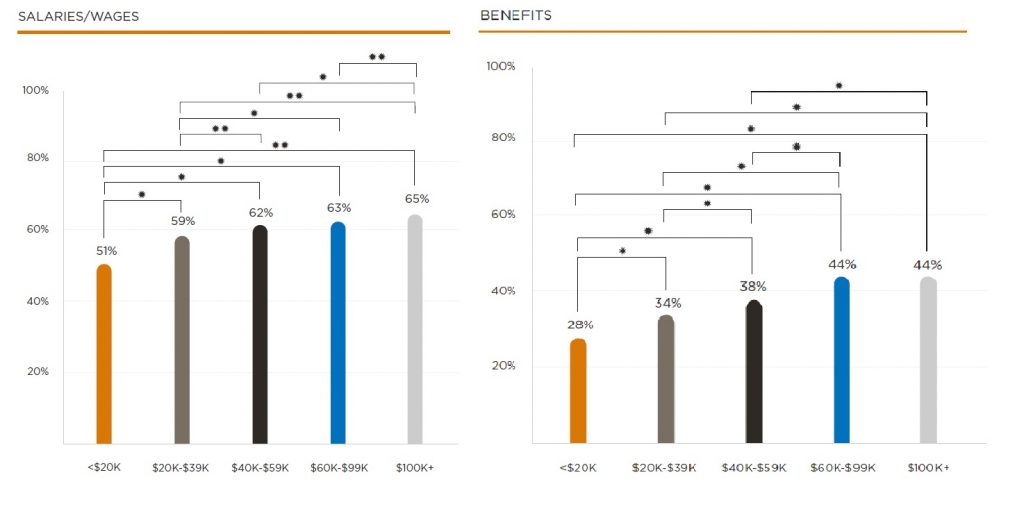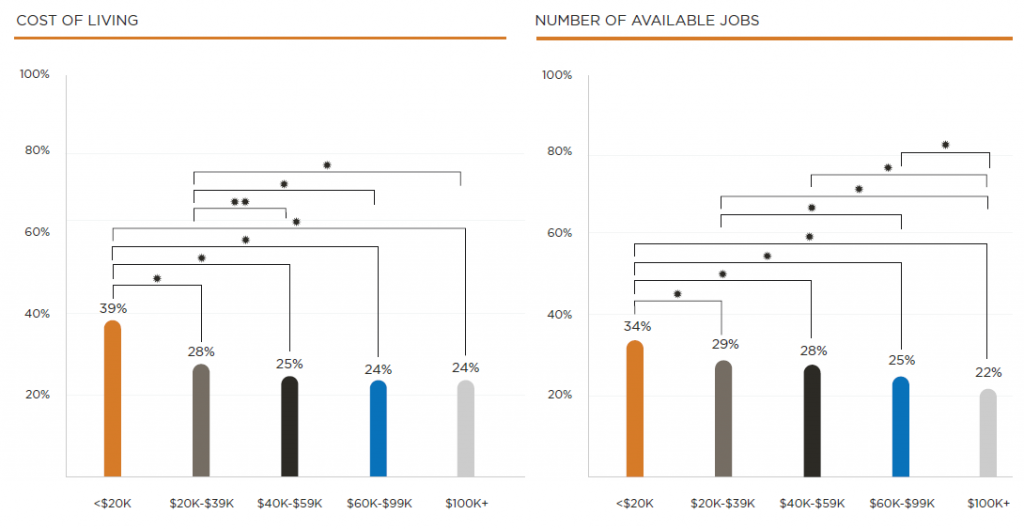
Digging Deep Reveals New LMI Findings
We conducted a series of public opinion surveys on ten groups of Canadians to understand their top labour market information (LMI) needs, sources and challenges. We reported key findings through a series of dashboards, LMI Insights and public presentations. But, we also wanted to gain deeper insights, such as whether young people face different LMI challenges than older people, how household income relates to the type of information sought, and if men and women get their LMI from the same sources. So we conducted an in-depth analysis to look for statistically significant patterns across sociodemographic groups. While the full report offers complete details, below is a summary of some interesting patterns we found.
LMI Needs Vary by Income Level
Our analysis shows that Canadians with higher household income are more likely to seek information on salaries/wages and benefits than those with less income. In fact, the proportion of respondents identifying salaries/wages and benefits as key LMI needs increases for each income bracket analyzed (see Figures 1 and 2). Respondents in lower income households were significantly more likely (at the 95% confidence level) to seek information on cost of living and number of available jobs.
Figure 1: Most Preferred LMI Needs for Households with Higher Incomes
Figure 2: Most Preferred LMI Needs for Households with Lower Incomes

Spoiler Alert: Young People Use Social Media to Find Job Information
Not surprisingly, younger respondents are far more likely to report using social media/job websites such as Monster or Indeed than older groups. Of those 24 years and younger, 35% use social media, versus only 26% for those aged 25 to 54 and 21% for those 55 and over. We observe the opposite pattern for the Government of Canada Job Bank. A third of those aged 25 to 55+ report using this source compared to only a quarter of younger Canadians. These findings highlight the need to use a variety of sources/platforms to provide high quality LMI.
Men and Women Face Similar LMI Challenges
Men and women have the same set of top LMI challenges. They report that the LMI they find does not provide insights into the future (24%), it does not apply to their situation (23%), and the information is out-of-date (19%). However, women tend to assign less importance to these challenges than do men. Conversely, those 24 and younger are more likely to find these challenges more important than older groups.
Putting It All Together
Our findings highlight the need for more local, granular LMI that can help meet the distinct needs of individuals in all jurisdictions, for both rural and urban areas. This blog offers only a glimpse into the main findings of our full LMI Insight Report. Nevertheless, the message is clear: when it comes to LMI, Canadians have diverse needs. In order to meet the needs of our multigenerational workforce, we must deliver more robust and tailored LMI systems.

Bolanle Alake-Apata is an Economist with LMIC. Her work currently focuses on conducting research on labour market information for recent immigrants and students.